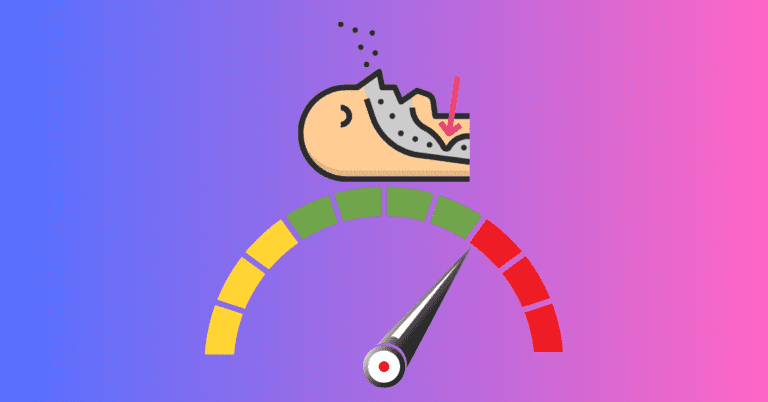Positional Therapy for Sleep Apnea: Does it Work?
Jeremy Smith is a long-term CPAP user and sleep apnea advocate. After being diagnosed with severe obstructive sleep apnea, he created ByJeremySmith.com to help others navigate CPAP therapy through personal stories, gear reviews, and practical advice.
When I first heard about positional therapy before I received my CPAP machine, I wasn’t entirely convinced it would work.

However, the idea is simple. You just need some device to stop you from sleeping on your back.
What Is Positional Therapy?
I know there are a lot of people who struggle with the discomfort of CPAP therapy so I thought I would cover positional therapy as it’s a less invasive method of helping with obstructive sleep apnea (OSA).
When you sleep on your back, the tongue and soft tissues in the throat can easily fall back and obstruct the airway making it difficult to breathe.
Positional therapy aims to prevent this obstruction and improve airflow by encouraging side sleeping.
It’s a non-invasive approach, which means there’s no need for machines or surgical procedures.
But for me, I have severe sleep apnea, so it’s not an option for me.
How Does Positional Therapy Work?
Positional therapy prevents sleeping on your back. It’s straightforward but requires consistency and dedication. I’ve read about various devices and techniques that can help achieve this goal.
Methods of Positional Therapy
There are several ways to implement positional therapy, ranging from simple techniques to specialized devices:
1. Positional Sleep Devices
These devices are designed to prevent you from rolling onto your back. Some options include:
- Positional Sleep Backpacks: These backpacks are worn like backpacks. The soft pads make lying on your back uncomfortable, encouraging you to stay on your side.
- Positional Sleep Belts: These belts are worn around the chest or waist and have built-in cushions that prevent back sleeping.
- Specialized Pillows and Wedges: A wedge pillow can elevate your upper body and reduce airway obstruction, promoting side sleeping.
I haven’t used these devices, but they seem like a good starting point for those wanting to try positional therapy.
2. Vibration-Based Devices
Vibration-based devices detect when you’re lying on your back and emit a gentle vibration to encourage you to change positions. They can be worn on the chest or neck and work without fully waking you up.
This option seems interesting to me because it offers a subtle nudge rather than forcing you into a specific position.
Who Can Benefit from Positional Therapy?
During my research, I found that positional therapy isn’t for everyone. It works best for those with positional obstructive sleep apnea (POSA). POSA occurs when OSA symptoms are significantly worse in the supine (back) position compared to the lateral (side) position.
If you notice that your snoring or apneas are more frequent when you sleep on your back, you might benefit from positional therapy. It’s often recommended for people with:
- Mild to Moderate OSA: Positional therapy can reduce the severity of OSA in these cases.
- Positional OSA Diagnosis: A sleep study can confirm if your apnea is positional. I’m considering taking a sleep study myself to see if this is the case for me.
- CPAP Intolerance: If you find CPAP therapy uncomfortable or intrusive, positional therapy offers a simpler alternative.
Effectiveness of Positional Therapy for Sleep Apnea
One of my main concerns was whether positional therapy could work. After all, changing sleep position sounds too simple.
However, research shows it can be effective, especially for those with POSA. Studies have demonstrated that it can significantly reduce the apnea-hypopnea index (AHI), a measure of the severity of sleep apnea.
Here’s what I found out:
- Reduced AHI: For people with POSA, positional therapy can lower AHI scores by as much as 50%.
- Improved Sleep Quality: Many people report feeling more refreshed and less fatigued after implementing positional therapy.
- Decreased Snoring: Snoring, often a precursor to sleep apnea, tends to improve with positional changes.

This is me with my CPAP machine. I need to use it because my OSA is severe.
My Hesitations About Positional Therapy
Even though the research is promising, I have a few reservations. The first is that positional therapy requires consistent effort. There’s a risk of falling back into old habits, especially if the device or method used is uncomfortable.
I’ve also read that some people find adjusting to new sleep positions hard, particularly if they’ve been back sleepers for most of their lives.
Lastly, for those with severe OSA, positional therapy might not be enough. It’s most effective for mild to moderate cases.
If you have severe OSA like many who require CPAP therapy, positional therapy might need to be combined with other treatments.
Combining Positional Therapy with Other Treatments
For those with more severe symptoms, or if positional therapy alone doesn’t suffice, combining it with other treatments can be an effective approach.
I came across a few strategies that might work well:
- CPAP Therapy: You can use CPAP therapy in addition to positional therapy to keep your airway open regardless of position.
- Oral Appliances: These appliances can help keep the tongue and jaw in place, reducing the risk of airway obstruction.
- Weight Management: Maintaining a healthy weight can reduce the severity of OSA and make positional therapy more effective.
These options appeal to me because they offer a comprehensive approach. Rather than relying on one solution, combining therapies could provide the best results.
Challenges and Limitations of Positional Therapy
I’ve read that not everyone can stick with positional therapy long-term. There are a few challenges I’m considering:
- Discomfort: Wearing a device or backpack might disrupt sleep rather than improve it.
- Long-Term Adherence: Slipping back into old habits is easy, especially during restless nights.
- Residual Apnea Events: Positional therapy alone might not prevent all apneas, particularly in severe cases.
Final Thoughts on Positional Therapy for Sleep Apnea
I like the idea of a non-invasive solution and see its potential benefits. However, I know it won’t be a miracle cure for everyone, especially for those like me with severe OSA.
If you’re considering positional therapy, speak with a healthcare provider. They can help you determine if it’s suitable for your specific needs.
Finally, please let me know in the comments below if you have any thoughts on positional therapy for sleep apnea.
Disclaimer: The content on this blog is for informational and educational purposes only and is not a substitute for professional medical advice. Always speak with your doctor or sleep specialist before starting, stopping, or changing any treatment or therapy related to sleep apnea or CPAP use.





